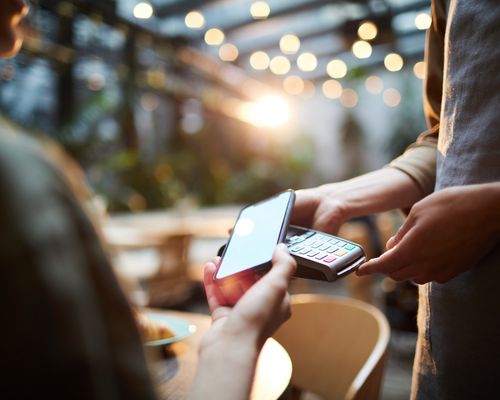Taking a touching approach to transport ticketing and home care for the elderly
Exploitation of powerful near-field communication technology makes it easy to pay bus, tram and metro fares or select from a choice of home meals by a simple touch of a mobile phone.
The EUREKA ITEA software Cluster SmartTouch project demonstrated the power of ‘near-field communications’ (NFC) technology to provide extremely easy-to-use touch-based interactive mobile services. It has developed a service platform and the main concepts for the necessary business chains in a wide range of uses – from payment and ticketing for public transport to access control, home entertainment and care for the elderly. Partners carried out technology demonstrations to identify real applications and gain a greater understanding of the user experience as user acceptance is crucial to the success of NFC. Commercial products and services are already being marketed as a direct result of the project.
NFC is a recent technology offering short-range wireless connectivity which enables smart mobile consumer devices to interact quickly and easily when brought close together or touching. Set up is fast and systems can be intuitively easy to use. The technology brings the touch paradigm to applications, allowing services such as mobile payment or ticketing by simply touching a reader with a mobile phone. As a result, NFC-based services will open up a totally new global dimension to receiving and using services.
The ITEA project brought together a large number of technology and service providers, researchers and companies to examine the role of NFC technology. As well as creating innovative applications, technical partners tackled protocols, enablers, applications, security and privacy through pilot projects in home, city life and wellness areas. The result is a cheap and fully open solution with no gateway requiring complex configurations.
Identifying the business areas “Currently, the whole industry worldwide is looking at the development of payment and ticketing areas as the way to open up the NFC market,” explains SmartTouch project leader Tuomo Tuikka of the VTT Technical Research Centre of Finland. “So, at the same time, we looked at developing the NFC technology with other players, also finding out what kind of business areas there would be for the future mobile services.”
Key developments included breakthroughs in the technology to make NFC possible, providing mobile handsets with relevant toolsets, protocol level achievements in standards, making payment possible and methods for security in production of NFC-enabled subscriber identity module (SIM) cards. “We applied these elements to create vertical applications, ticketing devices, locking devices and home electronics, and obtained feedback from piloting at other levels,” adds Tuikka.
SmartTouch pioneered a series of applications such as payments for public transport in Paris, France and Frankfurt, Germany. These demonstrations involved charging mobile phones at cashpoints and then paying by simply touching readers at public transport stops. Smaller tests in Finland and Spain demonstrated help for people with disabilities, the elderly and users of home electronic systems.
In one case, new mobile technologies were piloted in the City of Oulu in Finland. Here the local catering service for the elderly established an ordering system using mobile phones equipped with NFC readers. A simple touch of the desired menu item automatically transmitted the order to the service provider. The objective was to support elderly people at home by monitoring and automatic registration of meal orders, and also cut down on manual work. This pilot showed how local public services can help citizens manage their daily activities more easily. Practical applications will include services for elderly people, catering, logistics, access control and health services.
The same technology can be applied to paying for shopping and purchasing public transport tickets. The smart card used in the NFC device can be any limited value charge card, such as a library card, a bus card, a cinema ticket or a sports event ticket. The consumer is able to manage the card and monitor its use on the mobile phone. The technology enables the service provider to deliver the service card to the customer via the mobile network much more cost efficiently than through traditional channels.
Positive effect on European industry
The project has had a positive impact on European industry, points out Tuikka. “Without the ITEA consortium, it would have been extremely difficult for companies to update their product portfolios with NFC technology. We had an extraordinary combination of players, and the learning process has been innovative, enthusiastic and interesting. We had a bank, telecommunications operators, consumer electronics manufacturers, other manufacturers, research institutes and a city involved. The EUREKA framework helped create a powerful set of partners for iterative and co-operative technology development.” In addition, European industry has become more competitive on a global scale. SmartTouch partners have been actively paving the way for the global exploitation of NFC. The results of the project are already being exploited commercially, with more than 22 products to date. These include a touchatag spin-off from partner Alcatel-Lucent that offers a contactless radio-frequency identification (RFID) tag which automatically launches services. For example, a tag on a painting in a gallery could provide a mobile phone user with information about the painter.
There are a multitude of other products in log-in, ticketing and backend support – for example ticket validators and readers. Mobile phone manufacturer Nokia has developed relevant handset elements in terms of application programming interface (API) and software tools. And digital security company Gemalto is working with smart cards in the payment area – including NFC SIM cards – and associated security issues.
Related projects
SmartTouch
Browsing Through Smart Objects Around You.


